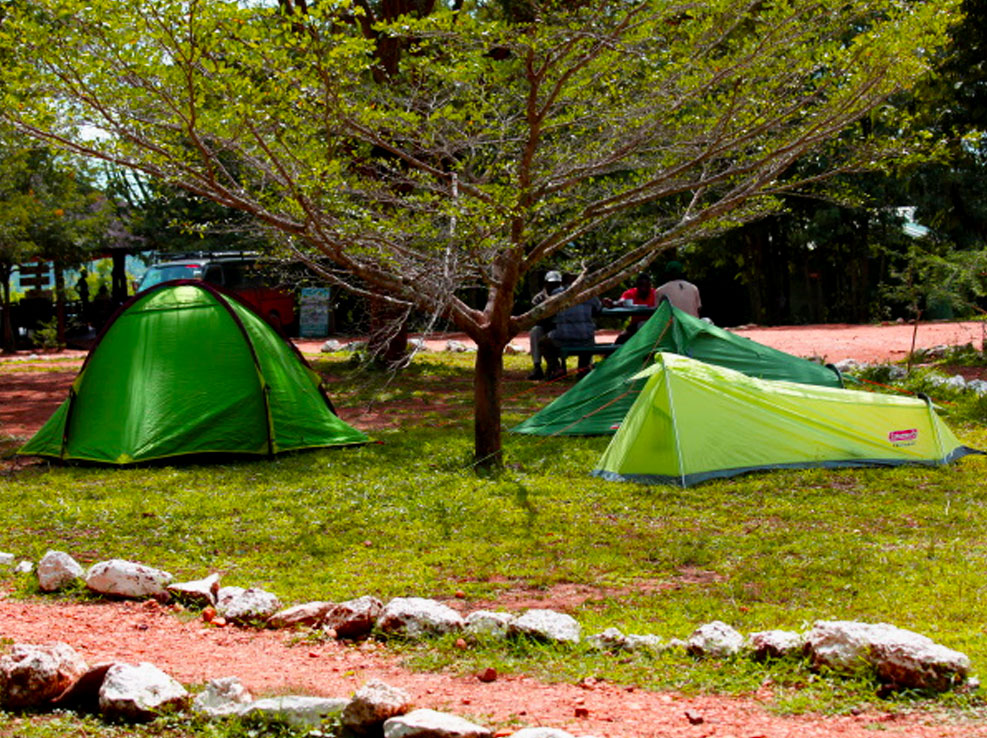
Chimpanzee Trekking in Kibale Forest National Park
Chimpanzee Trekking in Kibale Forest National Park is one of the most exhilarating primate safaris travelers can partake in Uganda, besides gorilla trekking in Bwindi Impenetrable Forest National Park. The incredible safari experience allows you to observe these fascinating primates in their natural habitat. Witnessing a chimpanzee group in Uganda’s Kibale Forest National Park is an active and thrilling excursion through the tropical jungle that will give you personal and immersive moments with man’s closest living relative. Located in western Uganda, Kibale Forest National Park protects one of Uganda’s most varied tropical rainforests, renowned for its high population density of chimpanzees and other primates. Steadfast Safaris is here to take you to Kibale National Park, which is well known as the primate capital.
Covering over 766 square kilometers, the park ranks as Africa’s Primate Capital boasting over 13 primate species including up to 1,500 chimpanzees, making it one of the best places in Africa to see chimps in their natural habitat. Other primate species that will rock your Uganda safari include L’Hoest’s Monkey, the endangered Red-tailed Monkey, the Blue Monkey, the Olive Baboon, the Grey-cheeked Mangabey, the Black-and-white Colobus Monkey, and Buh babies to mention but a few. Besides a high concentration of primates, Kibale Forest National Park hosts 69 mammal species including Forest Elephants, African Buffaloes, Blue duikers Bushbucks, among others as well as over 325 recorded bird species including the rare African and Green-Breasted Pittas.
How Can I Get to Kibale Forest National Park?
Kibale Forest National Park lies in the western region of Uganda, about 326 kilometers by road from Kampala, Uganda’s capital. Getting to the Park involves traveling to the western part of the country, either by road or air depending on your preferences and budget.
By Air: Flying by domestic or charter flight is the most convenient way to get to Kibale Forest National Park. Travelers can take a domestic flight from either Entebbe Airport (EBB) or Kajjansi Airfield in Kampala to nearby airstrips such as Kasese Airstrip, depending on availability, schedules, and choice of airline. Several domestic airlines such as Aerolink Uganda, and Eagle Air operate domestic flights to most of Uganda’s tourist locations and national parks.
By Road: This is the most popular and affordable way of getting to Kibale Forest National Park. The Park is approximately a 5 to 6-hour drive from Kampala, via either private or public transportation (like buses or taxis), depending on traffic and road conditions. Driving to Kibale Forest National Park allows you to explore Uganda’s countryside and appreciate the lush beautiful country it is.
The chimpanzee trekking experience in Kibale Forest National Park is truly remarkable and offers a unique opportunity to interact with these fascinating primates. The Park offers two chimpanzee trekking sessions: one starting at 8:00 AM and another starting at 2:00 PM. Your typical chimp trek in Kibale will begin with a briefing by experienced guides at the park headquarters at Kanyanchu Tourism Center. During the briefing, the guides will provide essential information about the chimp trek, safety guidelines, and insights into chimpanzee behavior to ensure a safe and enjoyable experience.
Once briefed, you set off into the lush forest with your guide and a ranger in search of the chimps. The trekking routes can vary in difficulty and duration, depending on the location of the chimpanzee groups on that day. While strolling through the forest, expect to encounter diverse flora and fauna including colorful birds and butterflies. The guides will often share knowledge about the forest ecosystem, pointing out various plant species, bird calls, and signs of other wildlife along the way. The highlight of the trek is undoubtedly the moment when you finally encounter a group of habituated chimpanzees. You typically have up to one hour to observe and photograph them, during which you may witness several intriguing behaviors such as grooming, playing, feeding, and interactions within the group, offering valuable insights into their social dynamics.
While in the presence of the chimpanzees, guides emphasize the importance of maintaining a safe distance and following park regulations to minimize disturbances to the chimpanzees. This ensures a respectful and sustainable wildlife viewing experience. Chimpanzees in Kibale Forest National Park are accustomed to human presence, allowing you to observe them up close in their natural habitat. After an hour’s worth of ecstatic chimp viewing, you begin the trek back to the park headquarters amidst impressive views of monkeys, birds, and other wildlife.
How Much is Chimpanzee Trekking in Kibale Forest National Park?
To trek chimpanzees in Kibale Forest National Park, one is required to purchase a chimpanzee trekking permit from the Uganda Wildlife Authority and the cost of chimpanzee trekking permits in Uganda varies from nationality and typically includes $250 for foreign non-residents, $150 for foreign residents, and UGX 150,000 for East African Citizens. This cost includes park entry fees, your chimp trekking experience, and guiding fees, and a portion of this cost is dedicated to chimpanzee conservation efforts in the park. However, additional expenses such as tour operator fees for transportation, meals, and accommodation should be considered. Booking in advance is advisable, and group discounts may be available. It’s essential to research reputable tour operators for all-inclusive pricing and to check with the Uganda Wildlife Authority for current permit fees and regulations.
What is the Best Time for Chimpanzee Trekking in Kibale Forest National Park?
While chimpanzee trekking in Kibale Forest National Park is good all year, the optimal time to enjoy the most memorable chimpanzee trekking experience in the park is during the dry seasons from June to August and December to February. These months offer minimal rainfall, making trekking trails more accessible and chimp sightings more rewarding. Additionally, clear skies enhance visibility and photography opportunities. However, if you prefer fewer crowds and are willing to tolerate potential rain, visiting during the shoulder seasons of March to May or September to November may offer a quieter chimp trekking experience. Advanced booking for permits and accommodations is recommended, especially during peak tourist seasons, to ensure availability and a seamless trekking experience.
How Fit do I Need to be to Trek Chimpanzees in Kibale Forest National Park?
Chimpanzee trekking in Kibale Forest National Park, unlike gorilla trekking, requires a moderate level of fitness. The trek can vary in duration and terrain, from relatively flat paths to more rugged and hilly areas; therefore, expect to walk for several hours on uneven terrain, including roots, rocks, and occasional muddy patches. However, there may be steep inclines at times, so having decent leg strength and cardiovascular endurance can help aid your chimp trek and make it less strenuous. Trekkers are often accompanied by experienced guides and trackers, assisting throughout, and porters are available for additional support if needed. It is essential to engage in regular physical activity beforehand and inform your tour operator of any specific health concerns to ensure a comfortable and enjoyable trekking experience.
Is Chimpanzee Trekking in Kibale Forest National Park Safe?
Absolutely! Chimpanzee trekking in Kibale Forest National Park is generally safe when conducted with experienced guides and the safety protocols are followed. Visitors are often accompanied by knowledgeable guides who ensure adherence to safety guidelines, maintain a safe distance from the chimpanzees, and limit group sizes to minimize disturbances. More so, a thorough pre-trek briefing that covers safety measures, expected behavior around the chimpanzees, and environmental conservation practices is given before the chimpanzee trek. Health considerations, such as wearing masks and sanitizing hands, further mitigate risks during encounters with these primates. With these precautions in place, visitors can enjoy a safe and enriching chimpanzee trekking adventure in Kibale Forest.
Guidelines for Chimpanzee Trekking in Kibale Forest National Park.
Here are the guidelines typically followed for chimpanzee trekking in Kibale Forest National Park; To trek chimpanzees in Kibale Forest National Park, one must be at least 12 years old and above. All travelers are expected to attend a mandatory pre-trek briefing conducted by park authorities or tour guides at the park headquarters. Trekking is allowed only with trained and experienced guides who are familiar with the forest, chimpanzee behavior, and safety protocols. Trekking groups are usually limited in size to minimize disturbance to the chimpanzees and their habitat. Follow the instructions of your guide regarding group behavior and movement.
Maintain a minimum distance (typically around 7 meters) from the chimpanzees at all times. Avoid direct eye contact and sudden movements that may startle or stress the animals. Loud noises, running, or shouting should be avoided to prevent alarming the chimpanzees or other wildlife. Flash photography is generally prohibited during chimpanzee treks as it may startle the animals and disrupt their natural behavior. Wear a mask during the trek, especially in situations where close contact with others is unavoidable. Sanitize your hands frequently, particularly before and after your chimp trek. Always stay with the trekking group at all times. Straying from the designated paths or groups can pose safety risks to you and the environment. Avoid littering, picking plants, or disturbing natural elements within the park. If you are feeling unwell or exhibiting symptoms of illness (especially respiratory infections), refrain from participating in the trek to prevent disease transmission to wildlife.
What do I Need to Pack for Chimpanzee Trekking in Kibale Forest National Park?
- Small backpack or daypack to carry essentials.
- Comfortable hiking shoes and comfortable clothing (layers for weather fluctuations during the day)
- Water bottle or hydration pack (stay hydrated during the trek).
- Snacks (energy bars, nuts, fruits) for quick energy boosts.
- Insect repellent (with DEET) to deter mosquitoes and other insects.
- Sunscreen with high SPF for sun protection.
- A good camera and a pair of binoculars to capture memorable moments, birdwatching, and chimp viewing respectively
- Portable charger or extra batteries for electronic devices.
- Personal identification and necessary permits or tickets.
- Prescription medications and basic first-aid kit (bandages, antiseptic wipes, pain relievers).
- Hand sanitizer or wet wipes for hygiene.
- Tissues or toilet paper (pack in a sealed bag for disposal).
- Sunglasses (with UV protection) and lip balm.
- Walking stick or trekking poles for added stability on uneven terrain.
Get in touch with Steadfast Safaris and have the chimpanzee trekking experience arranged as part of your Uganda safari. We shall customize your safari to the best of your interest.



